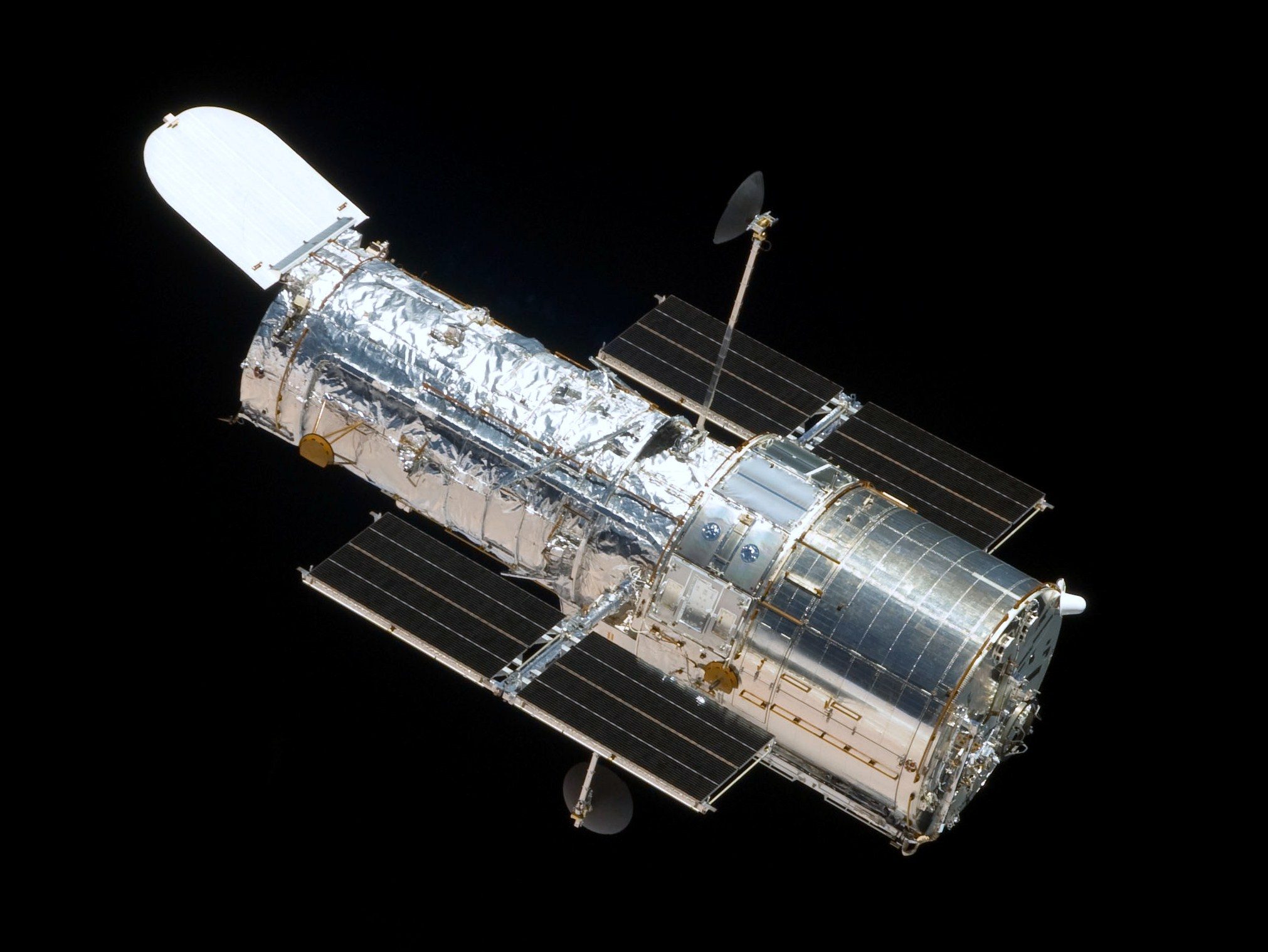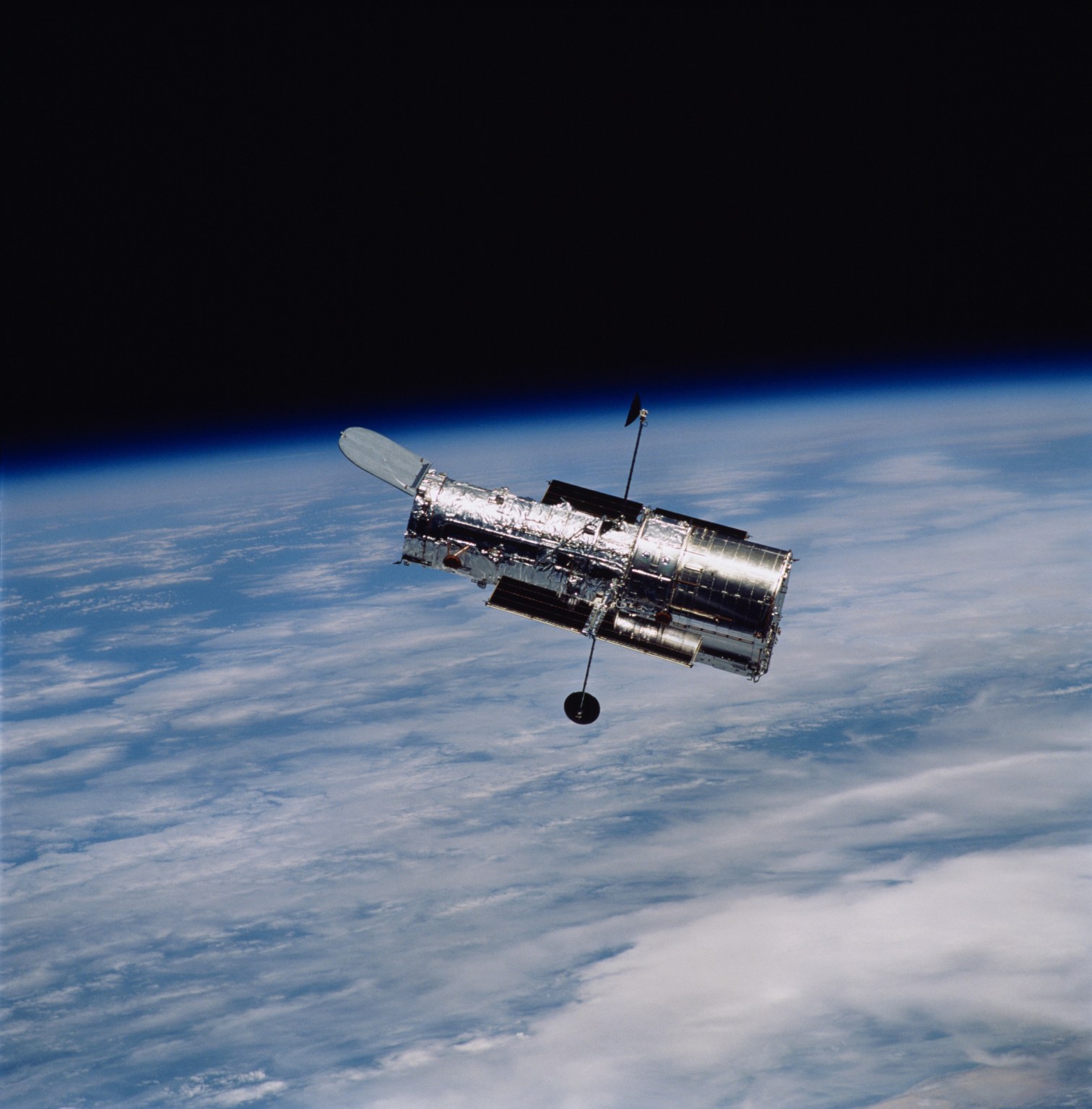Telescope in Space Hubble

The Telescope in Space Hubble has changed how we see the universe. Launched in 1990, it has provided stunning images and important data about space.
Hubble orbits Earth, far from our atmosphere’s distortion. This unique position allows it to capture clear and detailed views of distant galaxies, stars, and planets. Scientists use Hubble to study the age of the universe, the formation of stars, and the behavior of black holes.
The telescope has made groundbreaking discoveries, such as the existence of exoplanets and the expansion of the universe. With its incredible technology, Hubble continues to inspire curiosity about space and our place in it. Join us as we explore the amazing journey and contributions of the Hubble Space Telescope.

Hubble Telescope: A Window To The Cosmos
The Hubble Telescope launched on April 24, 1990. It travels high above Earth. This location helps it see far into space. Hubble’s clear images show stars and galaxies. It has changed how we understand the universe.
Since its launch, Hubble has worked well. It orbits Earth at about 17,500 miles per hour. The telescope gives us amazing views of space. Scientists use its data to learn more about black holes and the Big Bang.
Hubble has taken over 1.5 million images. These images help scientists and the public. They see the beauty of the cosmos. Hubble shows us how small we are in the universe.
Technological Marvels Behind Hubble
The Hubble Space Telescope uses special mirrors and lenses. These tools help Hubble see faraway stars and galaxies. The primary mirror is very large. It is 2.4 meters wide. This mirror gathers light from space.
Instruments on Hubble also play a big role. They help scientists learn about light in different colors. This is called spectroscopy. It helps us understand what stars are made of.
Cameras capture stunning pictures of space. These images show planets, nebulae, and other wonders. Filters help Hubble see different parts of the light spectrum. This shows hidden details in space.
Hubble is a true technological marvel. It helps us explore the universe in new ways.
Milestones In Space Observation
The Hubble Space Telescope has changed our view of space. It sent back stunning images of galaxies, stars, and planets. These images help us understand the universe better. Hubble discovered dark energy. This energy makes the universe expand faster. It also found new exoplanets. These are planets outside our solar system.
Another big find was the Hubble Deep Field. This image shows thousands of galaxies in one tiny spot. It helps scientists learn about the early universe. Hubble also studied black holes. These are strange areas in space with strong gravity.
| Discovery | Year |
|---|---|
| Dark Energy | 1998 |
| Exoplanets | 1992 |
| Hubble Deep Field | 1995 |
| Black Holes | 1994 |
The Science Of Hubble’s Imagery
The Hubble Space Telescope helps us see the universe clearly. It takes amazing images of stars, galaxies, and planets. But how does it show such vivid colors?
Colorizing the universe is about decoding light. Light from stars travels through space. It carries information about distance, temperature, and composition. Hubble uses special tools to analyze this light.
This process is called spectroscopy. It breaks light into colors. Each color tells us something different. For example, blue light means a star is hot. Red light shows a star is cooler.
The colors we see in Hubble’s pictures come from these light patterns. This helps scientists understand the universe better.
Hubble’s Impact On Astronomy
The Hubble Space Telescope has changed our view of space. It has helped us learn about stars, galaxies, and planets. Many scientists use Hubble’s data for their work. This has made modern astrophysics stronger and more accurate.
Hubble inspires young minds. Many kids dream of being astronomers because of its images. Schools use its pictures to teach about the universe. This helps kids connect with science and exploration.
Hubble’s discoveries spark curiosity. People want to know more about space. It encourages future scientists to ask questions and seek answers.

Challenges And Triumphs
The Hubble Space Telescope faced many technical hurdles. These challenges included problems with its mirror and other systems. Each issue required careful planning and smart solutions. Engineers and scientists worked hard to find fixes.
Service missions were crucial for Hubble’s success. Astronauts traveled to space to make repairs. They replaced broken parts and upgraded old ones. These missions helped keep Hubble running smoothly for many years.
| Mission Year | Upgrades |
|---|---|
| 1993 | Mirror correction |
| 1997 | New instruments added |
| 2009 | Final servicing mission |
Collaborations And Contributions
Many countries work together on the Hubble Space Telescope. These international partnerships help share ideas and resources. Scientists from different nations join forces for better results.
Countries like the United States, Germany, and the United Kingdom play important roles. They provide funding and technical support. This teamwork boosts scientific discoveries.
Each nation brings unique skills. Some focus on engineering, while others specialize in research. Sharing knowledge leads to amazing findings.
Through these collaborations, the Hubble has made great contributions. It has improved our understanding of the universe. Together, nations make space exploration stronger.

Beyond Hubble: The Future Of Space Telescopes
The future of space telescopes looks bright. Next-generation observatories will help us learn more about the universe. New designs will allow for better images and data. These telescopes will study planets, stars, and galaxies far away.
Legacy and succession are important concepts here. Hubble changed how we see space. Its discoveries still inspire scientists today. New telescopes will build on Hubble’s work. They will search for new worlds and answers to big questions.
| Next-Generation Telescopes | Key Features |
|---|---|
| James Webb Space Telescope | Infrared vision, deep space exploration |
| Large Synoptic Survey Telescope | Wide-field view, sky surveys |
| European Extremely Large Telescope | High-resolution images, distant objects |
Frequently Asked Questions
What Is The Hubble Space Telescope?
The Hubble Space Telescope is a powerful observatory launched in 1990. It orbits Earth and captures stunning images of distant galaxies, stars, and other celestial phenomena. Hubble operates in ultraviolet, visible, and near-infrared wavelengths, providing invaluable data that has transformed our understanding of the universe.
How Does Hubble Help Astronomers?
Hubble helps astronomers by providing high-resolution images and data. Its position above Earth’s atmosphere eliminates atmospheric distortion. This allows for clearer observations of cosmic events. The telescope has contributed to numerous discoveries, including the expansion rate of the universe and the existence of exoplanets.
What Are Hubble’s Major Discoveries?
Hubble has made several major discoveries, including the confirmation of black holes in galaxies. It also helped determine the age of the universe and discovered that galaxies evolve over time. Additionally, Hubble provided evidence for dark energy, reshaping our understanding of cosmic expansion.
How Does Hubble Compare To Ground Telescopes?
Hubble outperforms ground telescopes due to its location in space. Being above the atmosphere, it avoids light pollution and atmospheric distortion. This results in sharper images and more accurate data. Hubble’s unique capabilities make it an essential tool for modern astronomy.
Conclusion
The Hubble Space Telescope has changed how we see the universe. It has captured stunning images of galaxies, nebulae, and stars. These images help scientists learn about space. Hubble’s discoveries inspire curiosity and wonder about our cosmos. It shows us that there is so much more to explore.
As we continue to study the universe, Hubble remains a vital tool. Its legacy will last for generations. Understanding space helps us understand our place in it. The journey of discovery continues, and Hubble leads the way.






